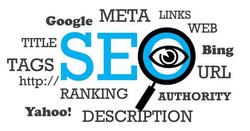Search engine optimization of each web page can be divided into on-page SEO and off-page (link building) SEO. You have complete control of the first and next to none of the later. There are several simple tasks you should do to improve your rankings in Search engines' indexes which should not take more than a few minutes. These minutes can very likely be the best investment of your time if you intend to present your content to as many readers as possible.
Here are 10 simple on-page SEO steps to do:











 Vintage Postcard Artists with 10 Examples of Easter Cardson 02/21/2025
Vintage Postcard Artists with 10 Examples of Easter Cardson 02/21/2025
 Valentine's Symbolson 01/23/2025
Valentine's Symbolson 01/23/2025
 Thanksgiving Symbolson 11/12/2024
Thanksgiving Symbolson 11/12/2024
 Famous Witches in Literary Historyon 10/06/2024
Famous Witches in Literary Historyon 10/06/2024



Can you add more tips on on-page SEO?
My pleasure, HollieT!
Another really helpful article and explained on-page SEO really well. Thank you!
Another really helpful article and explained on-page SEO really well. Thank you!
I would not dare to go into such precise percentages but these 10 steps are a good start for sure.
The first two sentences in your introduction advise us that "Search engine optimization of each web page can be divided into on-page SEO and off-page (link building) SEO. You have complete control of the first and next to none of the later."
The 10 steps ameliorate the perhaps 99.9 percent-recurring near-lack of control over off-page SEO, correct?
A duel module is a poll, designed as a duel: two opinions and everybody can vote for one of them. The result is graphically displayed in real-time.
The third sentence to your seventh fact, Be interactive, considers that "An addition of elements like we can use at Wizzley (polls, duels, and especially comments) is a very important step in this direction."
What is a duel?
I hope, it helps, katiem2. If I can give you a help in this area, just ask.
Came here to get your valued insights on SEO as I review, edit and update my articles and online content. Thanks
Thanks, dustytoes, for you comment. You are right, checking links from time to time is a very good habit. Internal ones are growing (in general) and at leas some of external links vecome out-dated or can be replaced with better ones.